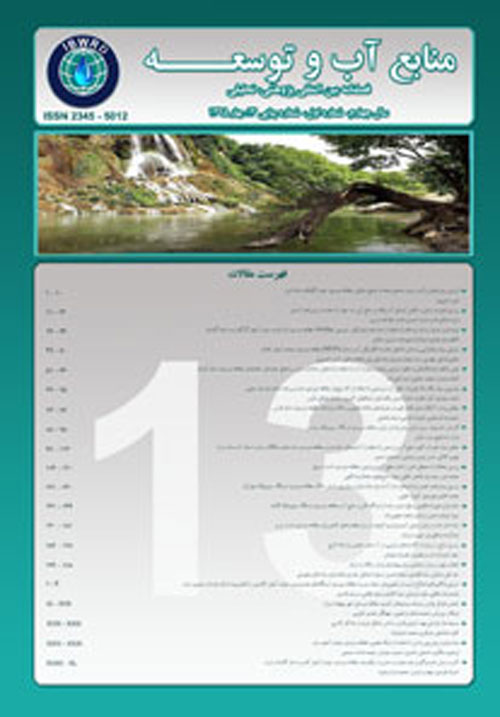Comparison of Current Geostatistical Methods for Interpolating Ground Water Level A Case Study of Bazargan Plain in the West Azerbaijan
Author(s):
Abstract:
One of the most important techniques in climatology studies are various interpolation methods. Moreover, in order to prepare integrated maps and predict unknown values, interpolation methods are needed. Estimating the groundwater level in most parts of the area is costly and difficult and applying interpolation methods can solve this problem. Thus, to draw groundwater maps, one can use different Piezometric wells to estimate other regions by interpolation methods. In this study, ten Pizometric wells of Bazargan Keshmeshtape area located in West Azerbaijan have been used to interpolate groundwater level in 2011 and 2012. Then, using GS software, Kriging, advanced interpolation and Inverse distance methods, the groundwater level was interpolated in two years. The results showed that the groundwater level had the same distribution pattern in these two years and Kriging and advanced methods showed the same results with the most regression coefficients. Using these methods, groundwater level can be interpolated and using the interpolated maps, the water level of groundwater can be estimated in the areas in is no Piezometric well. This results can help to find the best positions to dig wells.
Keywords:
Groundwater , GS+ , Interpolation , IDW , Kriging , Model , Simulation
Language:
Persian
Published:
International Bulletin of Water Resources and Development, Volume:4 Issue: 1, 2016
Pages:
119 to 128
https://magiran.com/p1549638
مقالات دیگری از این نویسنده (گان)
-
Assessment of Data-driven Models in Downscaling of the Daily Temperature in Birjand Synoptic Station
Mehdi Amirabadizadeh, Yousef Ramezani, *, Mohammad Javad Zeynali
Journal of Civil Engineering, Summer and Autumn 2019 -
Impact of 30 Years Changing of River Flow on Urmia Lake Basin
M. Nazeri Tahroudi *, F. Ahmadi, K. Khalili
Journal of Civil Engineering, Winter and Spring 2018



